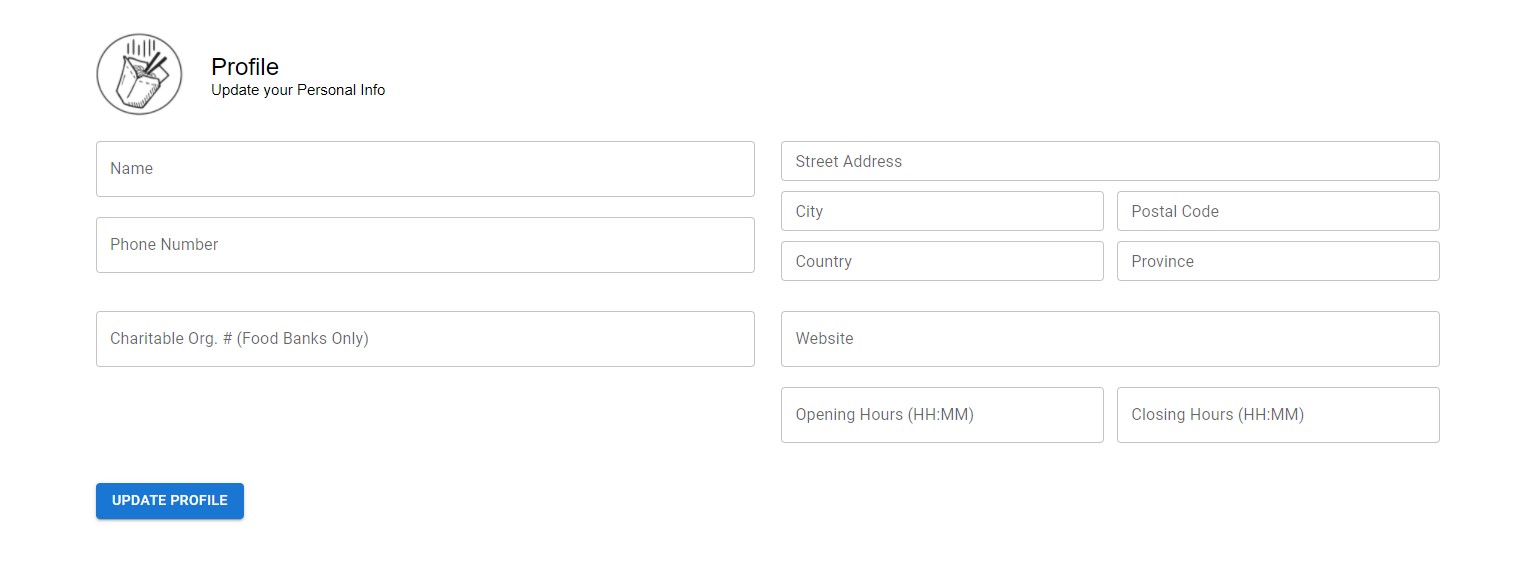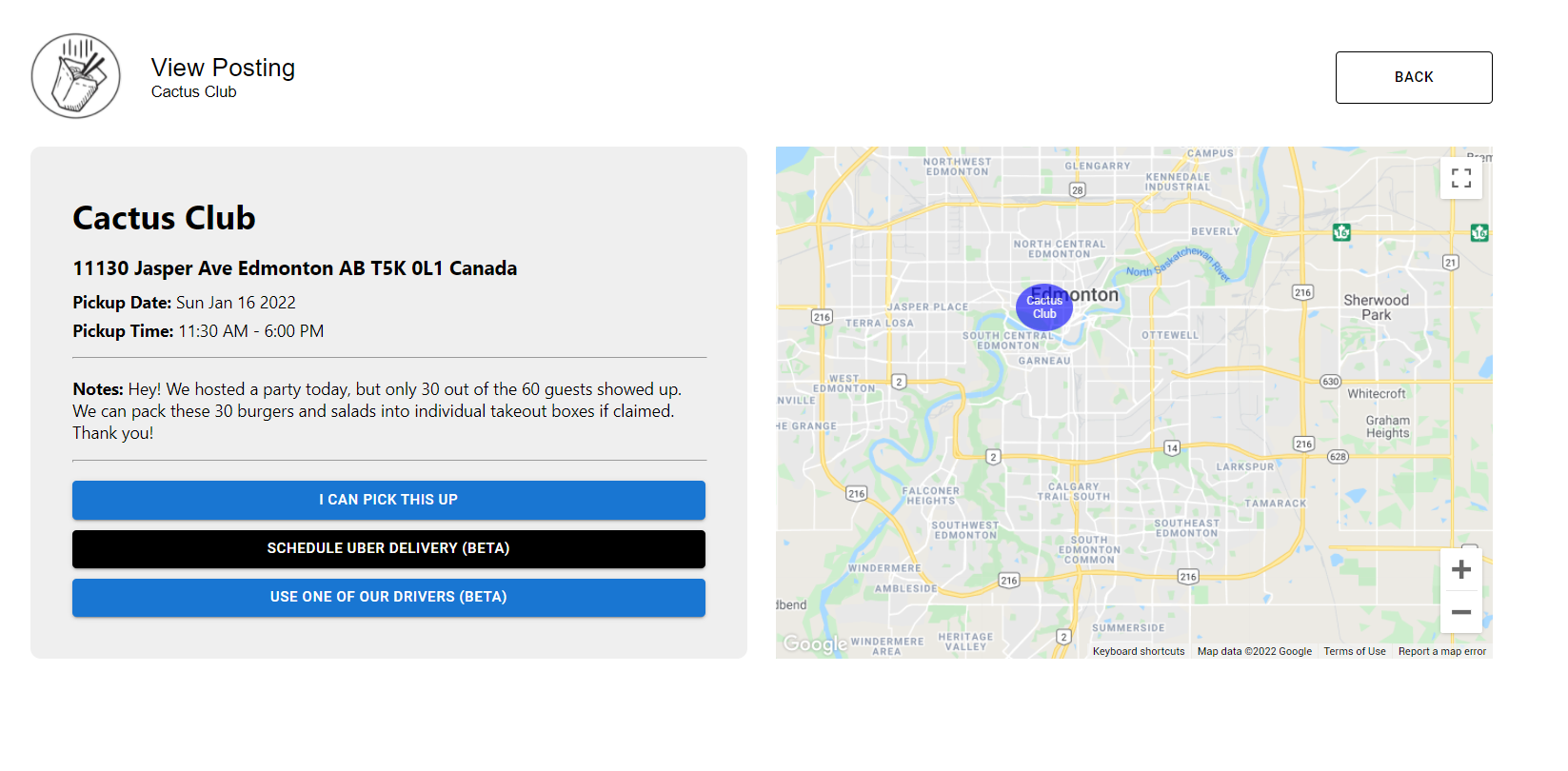Many of us who previously worked in a restaurant know all too well the problem of food waste. In the United States, food waste makes up around 30 to 40 percent of the food supply. At the same time, 690 million people go to bed on an empty stomach worldwide. Mealdrop aims to mitigate this problem.
Mealdrop is an ingenious application that helps solve food waste absolutely for free! Restaurants with extra food can create a posting within minutes, detailing the food and pickup options. Once a food bank notices a nearby posting, they can submit a pickup request and collect the extra food whenever they wish.
We created this app using the MERN stack (MongoDB, Express, React.js, Node.js). Our Heroku server handles RESTful HTTP requests from the front-end app to manipulate the Mongo database. To ping these endpoints on the server we use Axios, a promise-based HTTP client, on the front-end.
Our React front-end also handles authentication through JWT (JSON Web Tokens) and stores the user data serverlessly. Through this user data authentication, we can make sure that all server requests are legitimate; no outside user can manipulate another MealDrop user's data without their permission. We have also implemented Google Cloud Platform's Javascript Maps and their GeoCode library to display the locations of the participating restaurants on a map.
On the side of our back-end, we are hosting our server on Heroku. This way, we can ping our server endpoints without running our server locally. We created extremely robust yet flexible schemas for our database following the advanced principles of database creation. We handled routes in an elegant manner by making sure that the code was upscalable - to add any other routes, all that is required is to add another router file.
We followed clean code practices in creating this in the hopes that one day we can turn this project into a reality.
Some challenges that we ran into were regarding the JWT token authentication. We wanted to make sure that the cookies allowed for seamless UX by introducing refresh tokens. These refresh tokens automatically authenticate the user for up to 200 days.
Some more challenges that we ran into were with GitHub at times. We accidentally deleted all of our code, and the only way we could get that code back was by CTRL+S'ing on the "deleted" on the files in our VSCode editors.
We are proud of being able to create this project within 24 hours. Considering that this app has 8 separate pages and we are only a group of 3, this project took us a solid amount of time. We made sure EVERYTHING worked and was hooked up (there is no dummy data anywhere :) ), and this strive for perfection made this app the beauty that it is right now.
We learned about JWT tokens, CORs policies, React development, Express development, Node.js development, and MongoDB schema design principles.
We plan on implementing our Beta features which are hooking up MealDrop with Uber delivery, and creating a separate user account type for volunteer drivers.







